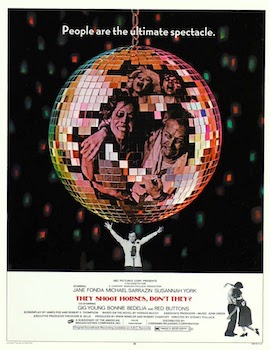
They Shoot Horses, Don't They? is a 1969 American psychological drama film directed by Sydney Pollack, from a screenplay written by Robert E. Thompson and James Poe, based on Horace McCoy's 1935 novel of the same name. It stars Jane Fonda, Michael Sarrazin, Susannah York, Gig Young, Bonnie Bedelia, and Red Buttons. It focuses on a disparate group of individuals desperate to win a Depression-era dance marathon and an opportunistic emcee who urges them on.

Dr. Phibes Rises Again is a 1972 British comedy horror film, produced by Louis M. Heyward, directed by Robert Fuest, and starring Vincent Price and Robert Quarry. The film is a sequel to The Abominable Dr. Phibes (1971). After seeking vengeance on the doctors whom he blamed for his wife's death in the first film, Phibes returns to seek eternal life in Egypt, while he pursues a centuries-old man who holds the ancient secrets that Phibes needs.

David Cecil MacAlister Tomlinson was an English stage, film, and television actor, singer and comedian. Having been described as both a leading man and a character actor, he is primarily remembered for his roles as authority figure George Banks in Mary Poppins, fraudulent magician Professor Emelius Browne in Bedknobs and Broomsticks, and as hapless antagonist Peter Thorndyke in The Love Bug. Tomlinson was posthumously inducted as a Disney Legend in 2002.

The Bedford Incident is a 1965 British-American Cold War film directed by James B. Harris, starring Richard Widmark and Sidney Poitier, and produced by Harris and Widmark. The cast also features Eric Portman, James MacArthur, Martin Balsam, and Wally Cox, as well as early appearances by Donald Sutherland and Ed Bishop. James Poe adapted Mark Rascovich's 1963 novel of the same name, which borrowed from the plot of Herman Melville's Moby-Dick; at one point in the film, the captain is advised he is "not chasing whales now".

Voyage to the Bottom of the Sea is a 1961 American science fiction disaster film, produced and directed by Irwin Allen, and starring Walter Pidgeon and Robert Sterling. The supporting cast includes Peter Lorre, Joan Fontaine, Barbara Eden, Michael Ansara, and Frankie Avalon. The film's storyline was written by Irwin Allen and Charles Bennett. The opening title credits theme song was sung by Avalon. The film was distributed by 20th Century Fox.

The Tomb of Ligeia is a 1964 British horror film directed by Roger Corman. Starring Vincent Price and Elizabeth Shepherd, it tells of a man haunted by the spirit of his dead wife and her effect on his second marriage. The screenplay by Robert Towne was based upon the short story "Ligeia" by American author Edgar Allan Poe and was the last in his series of films loosely based on the works of Poe. Tomb of Ligeia was filmed at Castle Acre Priory and other locations with a mostly British cast.

Ensign Pulver is a 1964 American Technicolor film in Panavision and a sequel to the 1955 film Mister Roberts. The film stars Robert Walker Jr., Burl Ives, Walter Matthau and Tommy Sands and features Millie Perkins, Larry Hagman, Kay Medford, Peter Marshall, Jack Nicholson, Richard Gautier, George Lindsey, James Farentino and James Coco.
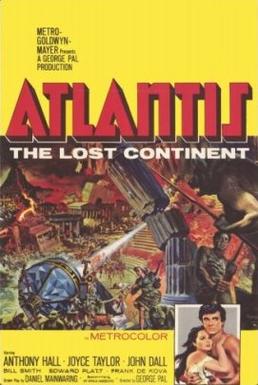
Atlantis, the Lost Continent is a 1961 American science fiction film in Metrocolor produced and directed by George Pal and starring Sal Ponti, Joyce Taylor, and John Dall. The film was distributed by Metro-Goldwyn-Mayer.
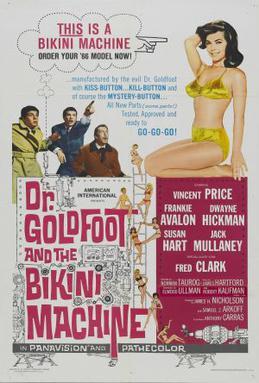
Dr. Goldfoot and the Bikini Machine is a 1965 Pathécolor comedy film directed by Norman Taurog and distributed by American International Pictures. Starring Vincent Price, Frankie Avalon, Dwayne Hickman, Susan Hart and Jack Mullaney, and featuring Fred Clark, the film is a parody of the then-popular spy trend, made using actors from AIP's beach party and Edgar Allan Poe films. The film was retitled Dr G. and the Bikini Machine in England due to a threatened lawsuit from Eon, holder of the rights to the James Bond series.

The Masque of the Red Death is a 1964 horror film directed by Roger Corman and starring Vincent Price. The story follows a prince who terrorizes a plague-ridden peasantry while merrymaking in a lonely castle with his jaded courtiers. The screenplay, written by Charles Beaumont and R. Wright Campbell, was based upon the 1842 short story of the same name by American author Edgar Allan Poe, and incorporates a subplot based on another Poe tale, "Hop-Frog". Another subplot is drawn from Torture by Hope by Auguste Villiers de l'Isle-Adam.

Ghost in the Invisible Bikini is a 1966 American fantasy comedy film. It is the seventh and last of American International Pictures' beach party films. The film features the cast cavorting in and around a haunted house and the adjacent swimming pool.

Pajama Party is a 1964 beach party film starring Tommy Kirk and Annette Funicello. This is the fourth in a series of seven beach films produced by American International Pictures. The other films in this series are Beach Party (1963), Muscle Beach Party (1964), Bikini Beach (1964), Beach Blanket Bingo (1965), How to Stuff a Wild Bikini (1965), Ski Party (1965) and The Ghost in the Invisible Bikini (1966).
This is a list of bestselling novels in the United States in the 1920s, as determined by Publishers Weekly. The list features the most popular novels of each year from 1920 through 1929.

20,000 Leagues Under the Sea is a 1954 American science fiction adventure film directed by Richard Fleischer, from a screenplay by Earl Felton. Adapted from Jules Verne's 1870 novel of the same name, the film was personally produced by Walt Disney through Walt Disney Productions. It stars Kirk Douglas, James Mason, Paul Lukas, and Peter Lorre. Photographed in Technicolor, the film was one of the first feature-length motion pictures to be filmed in CinemaScope. It was also the first feature-length Disney film to be distributed by Buena Vista Distribution.
James Harvey Nicholson was an American film producer. He is best known as the co-founder, with Samuel Z. Arkoff, of American International Pictures.
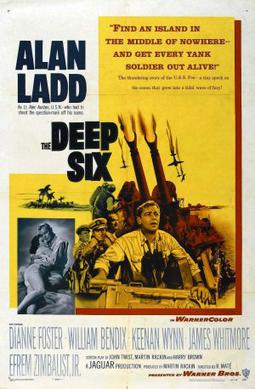
The Deep Six is a 1958 American World War II drama film directed by Rudolph Maté, loosely based on a novel of the same name by Martin Dibner. The film stars Alan Ladd, who co-produced it, William Bendix, Dianne Foster, Keenan Wynn, James Whitmore, and Efrem Zimbalist Jr. It also marked the film debut of Joey Bishop. It was distributed by Warner Bros.
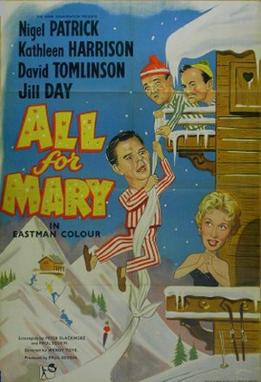
All for Mary is a 1955 British comedy film brought to the screen by Paul Soskin Productions for the Rank Organisation. It was based on a successful West End play by the English husband and wife team of Kay Bannerman and Harold Brooke. It was directed by Wendy Toye, produced by Paul Soskin with the screenplay by Paul Soskin and Peter Blackmore. It starred Nigel Patrick, David Tomlinson, Jill Day and Kathleen Harrison. Eastmancolor Cinematography was by Reginald H. Wyer. The film had an original copyright notice with a renewal in 1983.
Susan Hart is an American actress, and the widow of American International Pictures (AIP) co-founder James H. Nicholson.
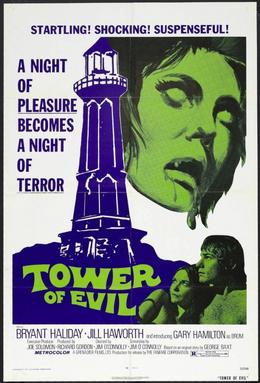
Tower of Evil, also known by the titles Horror on Snape Island and Beyond the Fog, is a 1972 British horror film directed by Jim O'Connolly.

The Saga of the Viking Women and Their Voyage to the Waters of the Great Sea Serpent is a 1958 American action-adventure horror film directed by Roger Corman. It stars Abby Dalton, Susan Cabot and June Kenney.
















